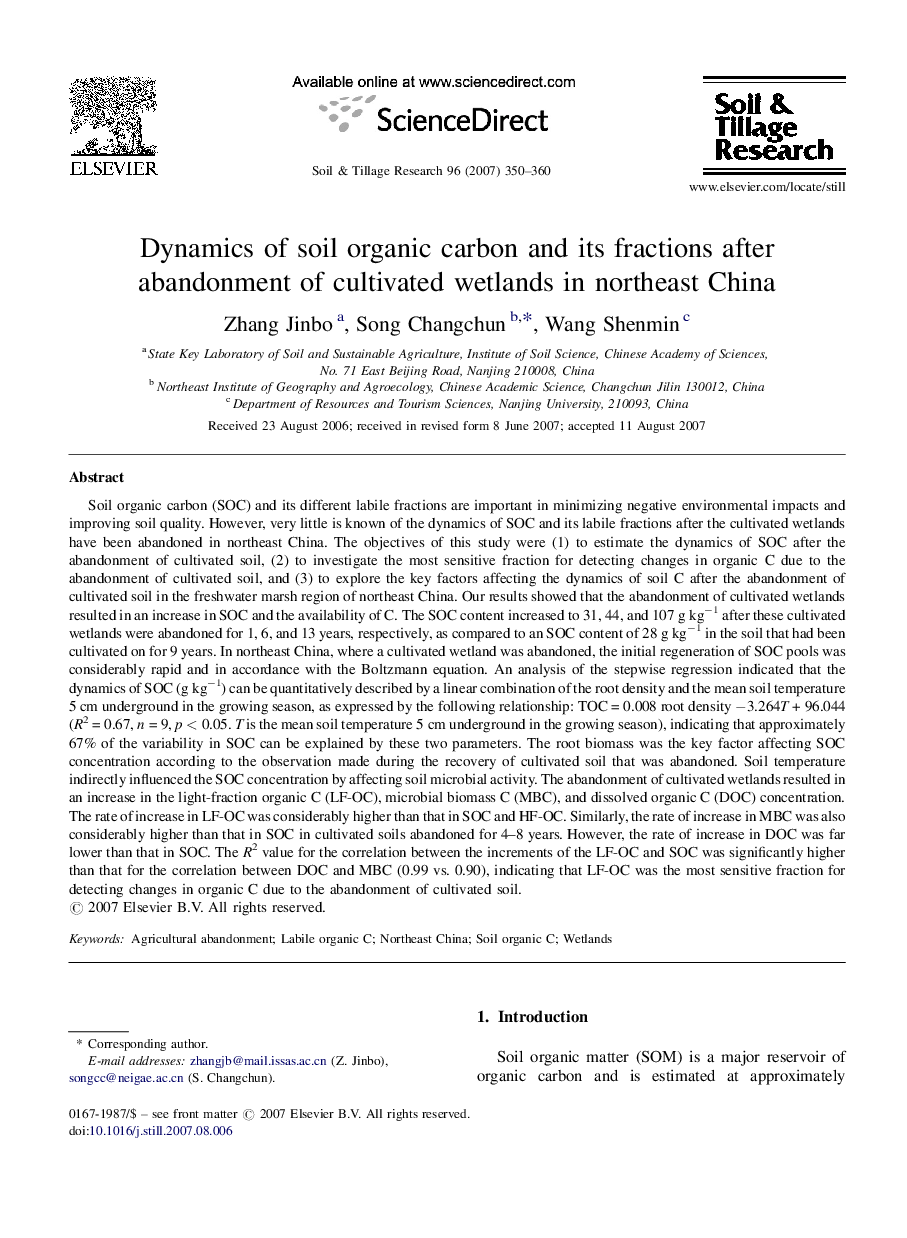| کد مقاله | کد نشریه | سال انتشار | مقاله انگلیسی | نسخه تمام متن |
|---|---|---|---|---|
| 306562 | 513101 | 2007 | 11 صفحه PDF | دانلود رایگان |

Soil organic carbon (SOC) and its different labile fractions are important in minimizing negative environmental impacts and improving soil quality. However, very little is known of the dynamics of SOC and its labile fractions after the cultivated wetlands have been abandoned in northeast China. The objectives of this study were (1) to estimate the dynamics of SOC after the abandonment of cultivated soil, (2) to investigate the most sensitive fraction for detecting changes in organic C due to the abandonment of cultivated soil, and (3) to explore the key factors affecting the dynamics of soil C after the abandonment of cultivated soil in the freshwater marsh region of northeast China. Our results showed that the abandonment of cultivated wetlands resulted in an increase in SOC and the availability of C. The SOC content increased to 31, 44, and 107 g kg−1 after these cultivated wetlands were abandoned for 1, 6, and 13 years, respectively, as compared to an SOC content of 28 g kg−1 in the soil that had been cultivated on for 9 years. In northeast China, where a cultivated wetland was abandoned, the initial regeneration of SOC pools was considerably rapid and in accordance with the Boltzmann equation. An analysis of the stepwise regression indicated that the dynamics of SOC (g kg−1) can be quantitatively described by a linear combination of the root density and the mean soil temperature 5 cm underground in the growing season, as expressed by the following relationship: TOC = 0.008 root density −3.264T + 96.044 (R2 = 0.67, n = 9, p < 0.05. T is the mean soil temperature 5 cm underground in the growing season), indicating that approximately 67% of the variability in SOC can be explained by these two parameters. The root biomass was the key factor affecting SOC concentration according to the observation made during the recovery of cultivated soil that was abandoned. Soil temperature indirectly influenced the SOC concentration by affecting soil microbial activity. The abandonment of cultivated wetlands resulted in an increase in the light-fraction organic C (LF-OC), microbial biomass C (MBC), and dissolved organic C (DOC) concentration. The rate of increase in LF-OC was considerably higher than that in SOC and HF-OC. Similarly, the rate of increase in MBC was also considerably higher than that in SOC in cultivated soils abandoned for 4–8 years. However, the rate of increase in DOC was far lower than that in SOC. The R2 value for the correlation between the increments of the LF-OC and SOC was significantly higher than that for the correlation between DOC and MBC (0.99 vs. 0.90), indicating that LF-OC was the most sensitive fraction for detecting changes in organic C due to the abandonment of cultivated soil.
Journal: Soil and Tillage Research - Volume 96, Issues 1–2, October 2007, Pages 350–360